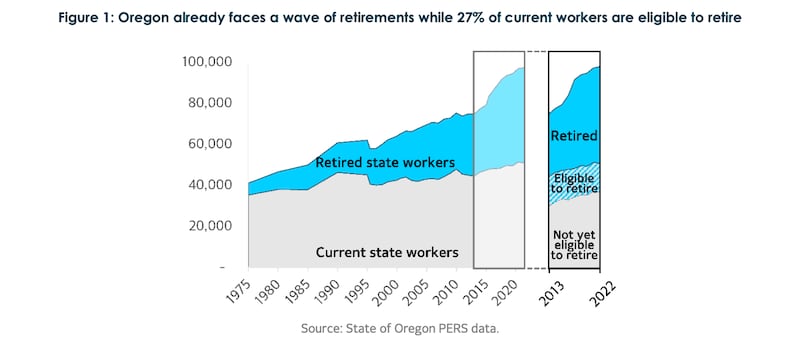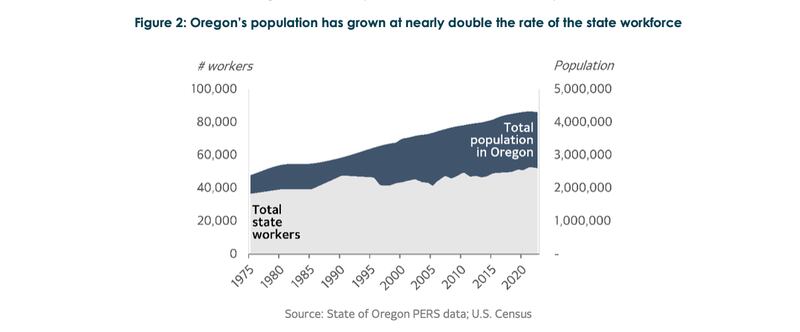A new audit from Oregon Secretary of State LaVonne Griffin-Valade says Oregon’s state agencies are facing multiple manifestations of a personnel crisis as they try to manage the state’s 45,000 employees.
“Unlike several other states, Oregon does not have a statewide strategic workforce planning process,” the audit noted. “Oregon does not have a clear, consistent, or comprehensive approach to identify what state government needs to do to support its workforce and ensure it has the skills required to meet present and future obligations.”
Auditors found that responsibility for managing personnel is shared between the Department of Administrative Services and individual agencies, some of which are large enough to have their own HR functions.
“Oregon’s statutory framework for personnel administration does not clearly articulate agency vs. statewide roles and responsibilities and complicates integration of workforce management with financial management,” the audit found.
The result is twofold: a current shortage of workers and impending retirements, both of which could affect the people whom state government exists to serve.
Two data points capture the challenge: “Nearly one in five budgeted state positions are currently vacant,” the audit found. And “26% of [pension]-qualified state employees are eligible to retire with benefits as of June 2023. These looming retirements elevate the risk of losing historical knowledge possessed by experienced employees. Loss of this knowledge can hinder remaining employees in their work and undercut agency effectiveness.”

The vacancies and retirements loom large at agencies such as the Department of Human Services, which is charged with safeguarding the state’s most vulnerable citizens; the Oregon Employment Department, which is supposed to provide benefits to those who have lost their jobs; and the Oregon Health Authority, which looks out for the well-being of the state’s neediest residents.
Auditors identified a barrier to filling vacancies: the personnel management system the state recently implemented. “Workday, the state enterprise resource planning system, does not include meaningful employee competency data,” the audit found. “Without this data, understanding the gaps between availability of workforce supply, and the specific competencies needed in the workforce, will continue to be a challenge.”
Even if all the vacancies are filled, there might not be enough staff to complete all the work that needs to be done. That’s because the state’s population has grown far faster than the number of state employees.

Nobody should be surprised by the new findings. The audit cites a dozen previous audits of various state agencies since 2012 that have identified similar challenges.
“Audit findings have also consistently highlighted deficiencies in training initiatives, including inadequate training resources, outdated content, and insufficient professional opportunities,” the new report says. “The consistency and duration of these audit findings suggest pervasive systemic challenges fueled by the absence of a proactive statewide approach for managing workforce challenges.”
After taking office last year, Gov. Tina Kotek rolled out a list of 11 expectations for recruitment, retention, evaluation, feedback and other tangible markers of better personnel management. The audit found those new expectations are in various stages of implementation but that the state may need more resources and structure to achieve Kotek’s goals.
“For agencies to meet these expectations, some legislative action, such as the clarification of agency roles and authority for workforce planning, may be necessary,” the audit said. “DAS has already shown some initiative by creating accountability measures that align with the Governor’s expectations and communicating them in progress reports and on a public website.”
In a written response to the audit, DAS director Berri Leslie agreed with auditors’ findings and pledged to implement their recommendations.

